About 1NCE
1NCE is recognized for connecting low data products and now challenges the industry paradigm for high data IoT. High data use cases like cameras can be connected the 1NCE Way for a single rate of $5 per GB worldwide. However, the 1NCE high-data connectivity is simply a roaming solution that has several limitations when compared to a true eSIM solution like TEAL.

Roaming vs. Core Connectivity – A Comprehensive Comparison
Examining the contrast between roaming and native core network connectivity provided via eSIM technology from TEAL brings forward a salient argument for the latter. Essentially, roaming, while useful for many use cases, pales in comparison to the dedicated infrastructure and the subsequent performance enhancement that core network connectivity offers.
Roaming solutions are a popular option, but they often lack the necessary infrastructure to support IoT and M2M devices. Roaming relies on leveraging the network infrastructure of other providers. This can cause issues with connectivity, speed, and security. In contrast, core network connectivity offers access to dedicated MNO infrastructure for these devices, which translates into improved performance. Some IoT connectivity vendors claim to offer support for high-data use cases, however, the fact that these solutions are using global roaming SIMs, means that they will run into many performance issues such as high-latency, low reliability, and little redundancy.
It’s nearly impossible for a roaming solution to stand by a claim that they can consistently provide speeds upwards of 20 mb/s, because latency is the measurement of time to communicate between two computers, and it depends on a lot more than just what any MVNO can provide. The reality is that latency with roaming solutions can be unpredictable.
Why 1NCE Is Not Ideal For High Data IoT
1NCE is a network provider that rents airtime (radio network) from the MNOs but adds a virtual data network for the actual throughput. Connections to this network first go through an MNO tower, then an MVNO datacenter.
Many MVNOs like 1NCE claim that they are connectivity platforms, but because they are renting their platform, it means that you’re stuck with a static, limited solution and any changes are reliant on a 3rd party. With Teal’s patented and wholly-owned eSIM platform, IoT companies can develop features and functionality without 3rd party reliance, which translates into faster go-to-market capabilities.
1NCE still operates a virtual network. They still operate datacenters and provide a rough copy of the data architecture of the original MNO network. At first, they look easy to join and may even seem cost effective, but then they fall short when roaming agreements are suddenly blocked or when they experience higher latency due to reduced datacenter capacity.
1NCE will assert that they offer carrier-switching, but the reality is that they only switch you between towers while datacenters remain the same. In many cases, the identity stays the same as well. Why is this bad for IoT companies? Mainly because MVNOs don’t offer redundancy and remain a single point of failure.
IoT devices that are connected onto away networks are not prioritized. This means that in some cases you may experience great performance, but in many other instances, performance will be degraded, and latency will be high. This makes it impossible to make marketing claims such as 25 mb/s and this unreliability in network speeds and availability is not ideal for most mission critical high-data applications such as video surveillance, fleet management (telematics) solutions, autonomous robotics and BVLOS drones.
So, while it might seem like you are getting great global coverage at competitive rates, the reality is that your mission critical devices are put at risk and will likely experience less than advertised performance.
eSIM Is The Only Connectivity Choice For High-Data Use Cases
Contrarily, native core connectivity is purpose-built for IoT and M2M devices, ensuring consistent, high-quality service, and response, irrespective of location. The costs associated with core connectivity are also more predictable, given the absence of unexpected roaming charges, which can be detrimental to the financial health of a business.
Overall, the return on investment with native core networks stands out due to the performance gains and the ability to maintain better control over connectivity infrastructure.
Why Choose TEAL?


Don’t Take Our Word For It!


